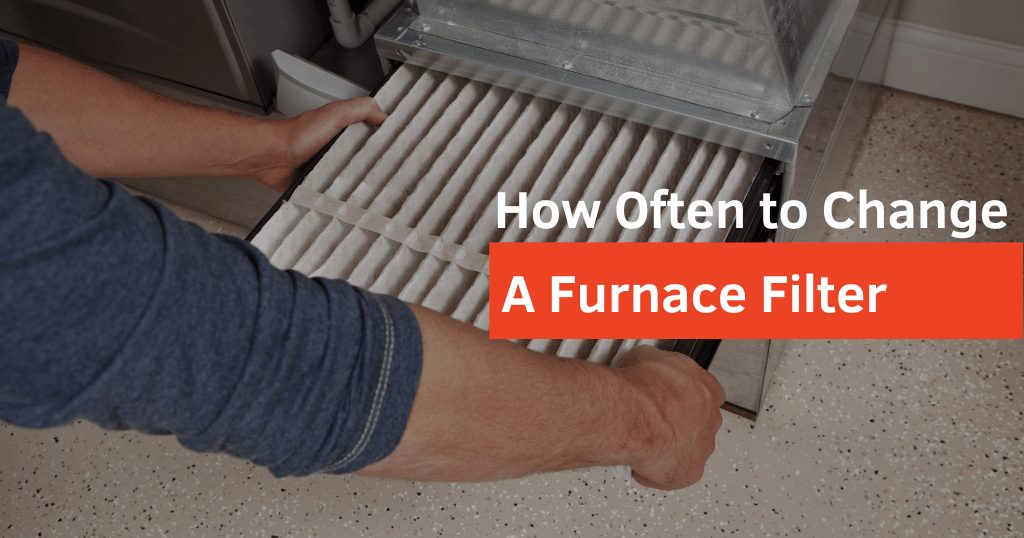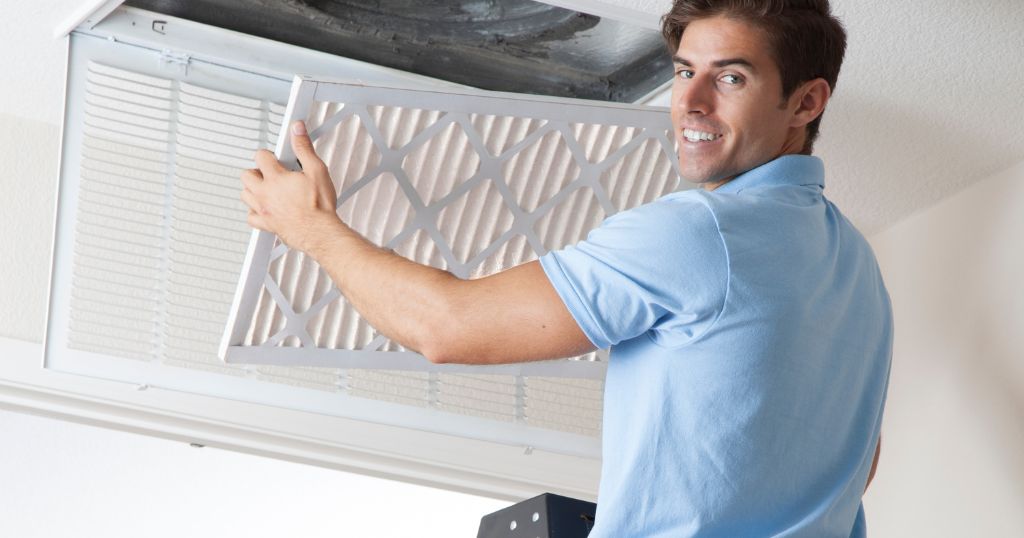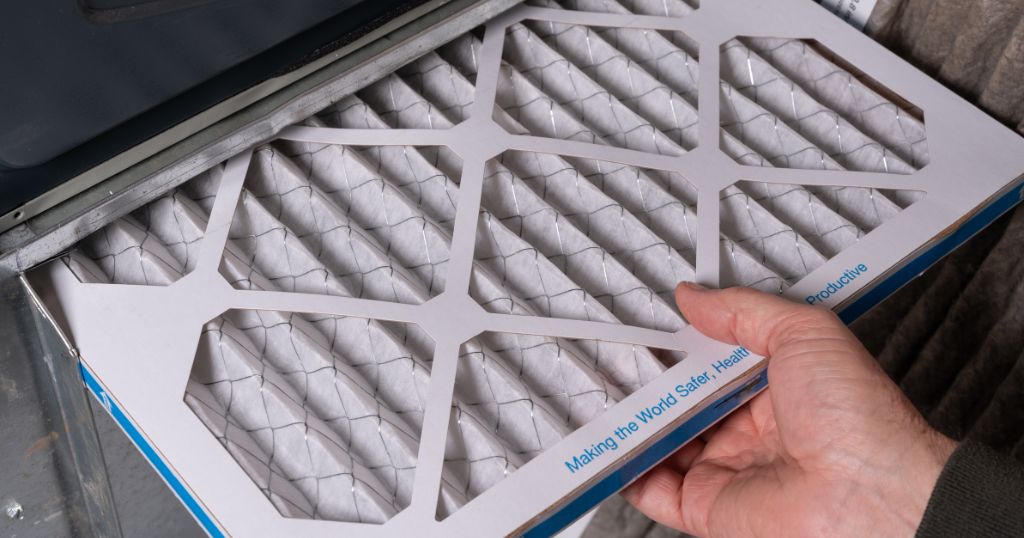All filters are made in the USA – Order Today

When it comes to maintaining healthy indoor air quality, homeowners often focus on the regular replacement of their AC air filters, recognizing the importance of keeping the cooling system efficient. However, what might slip under the radar is the equally important task of changing the furnace filter at regular intervals. In any home with central air and heating, the furnace is like the heating superhero. It takes the cold air in and heats it up before distributing it throughout the home via the air handler. You can consider it an integral part of your HVAC air filtration system. Inside this heating system, you have parts like the heat exchanger, combustion chamber, and air blower, all working together to keep the surroundings warm and cozy.
Now, here’s where the furnace filter steps in as a key player. It’s like the clean-up crew, making sure the air that gets pumped around your home is nice and fresh. In this blog post, we will delve into the essential question: how often should you change your furnace filter? Moreover, you will discover some of its importance and benefits. So, without any delay, let’s get started!

A furnace filter plays a crucial role in your HVAC system by trapping dust, debris, and allergens from the air. It improves indoor air quality, prevents damage to the furnace, and enhances overall efficiency. Regularly changing the filter ensures optimal performance, extending the life of your system and promoting a healthier living environment.
Additionally, a clean furnace filter helps maintain consistent airflow, ensuring even heating throughout your home. By capturing particles like pollen and pet dander, it contributes to a healthier atmosphere, especially for those with allergies. Neglecting filter maintenance can lead to reduced energy efficiency and increased utility costs. Regular inspection and replacement, typically every 1-3 months, are essential for maximizing the effectiveness of your furnace and creating a more comfortable and cost-effective indoor environment.
When it’s time to change your furnace filter, you will have to think about a few things to get it just right. Experts say a good rule of thumb is to replace your filter at least once every 90 days. But remember, this is just a general idea, and some situations indicate that you need to do it more often or less often.
The thickness of your furnace filter is one of the essential variables in deciding when to change it. Thicker furnace filters can hold more contaminants and dust and usually last longer. These filters are available in different sizes, like 1-inch, 2-inch, 4-inch, and 5-inch. Here’s a quick breakdown:
The filter slot in your furnace and the air handler determine the thickness of your furnace filter. Don’t try to squeeze a big filter into a small slot or use a too-thin filter that won’t do the job right.
Also, keep in mind that thicker furnace filters might cost a bit more upfront as compared to the thin ones (1-inch and 2-inch furnace filters), but since they last longer, they can actually be a smarter money-saving choice over time. So, by thinking about these things, you can figure out the best time to change your filter and keep the air in your home clean and comfy.

It’s really important to change your furnace filter regularly, more than you might realize. The filter catches things such as dust and pet dander in the air before your furnace spreads it around your home. This keeps the air in your house fresh and clean all the time. But if the filter gets old and dirty, it can’t do this job well, and the air inside your home won’t be as good. The filter also helps with the energy consumption of your furnace. If the filter is dirty, the furnace has to work harder and use more energy, which makes your energy bills go up. On the other hand, if you change the filter often, then your furnace does not have to work as hard, which results in saving energy and keeping your bills lower.
Changing your furnace filter regularly does more than just keep the air in your home clean. It also helps your HVAC unit last longer. When the filter is dirty, the HVAC system has to work harder and that can wear it out faster. A new and clean furnace filter makes your HVAC unit work better and also helps extend its life by keeping it in good shape. Another good reason to change your furnace filter often is to avoid frequent repairs. Fixing a broken HVAC system can cost a lot more than regular maintenance. HVAC systems often act up when you really need them, especially during extreme weather. If you get an HVAC protection plan, which you can bundle with your electricity contract or add on from services like Constellation Home in some areas, you might save money and keep your system running well.
Changing your furnace filter also makes a difference in how well your home stays at a comfortable temperature. It’s not just about keeping the air clean; it helps your heating and cooling work better too. So, by simply changing your furnace filter regularly, you are not only making sure that the air you breathe inside your house stays nice and clean, but you are also saving money on your energy bills and helping your HVAC system last longer.
If you forget to change your furnace filter on time, it can lead to some serious issues. You might think it’s not a big deal, especially if you live in a mild climate or don’t worry too much about the air quality in your home. However, changing your furnace filter is important for more than just the air you breathe inside your house.
Even in a moderate climate with good air quality, it’s crucial to change your furnace filter as recommended to protect your HVAC system. The main job of the filter is not just to make the air cleaner but to keep the air that goes through the furnace and other HVAC parts clean. Many parts of the system can be harmed by air contaminants present in the air. When these things get into the system, they can cause problems and make the equipment work harder.
If you don’t change your furnace filter regularly, you might end up with a furnace that doesn’t work as efficiently and might not last as long. This means you will spend more money in the short term on energy bills for heating and cooling your home. In the long run, you could face more repairs and have to replace the furnace or the whole HVAC system sooner than you would expect. So, not changing your furnace filter doesn’t just affect the air quality but also how well and how long your heating and cooling systems work.
Changing your furnace filter regularly is super important for a healthy and efficient home. Following the suggested timelines helps keep your indoor air fresh and free from yucky stuff, which is good for everyone in the house. Plus, swapping out the filter on time does wonders for making your heating and cooling system last longer and cost you less money over the years. Whether you live in a mild place or just care about having clean air, changing your furnace filter regularly is a small thing that makes a big difference in how comfy and reliable your home is. So, remember to keep up with those filter changes and enjoy the benefits of fresher air, lower bills, and a system that keeps you cozy all year round.
If you are considering buying a new air filter, you can get the best one from Custom Filters Direct. We can build any size filter you need.
When your furnace filter is dirty, you might notice a few things going on. Your heating bills could increase, the air in your house might not feel as good, and the airflow could be weaker. Also, some rooms might not get as warm as others, and there might be a burning smell when your furnace starts. Plus, having a dirty filter can make your energy costs go up. So, if you see these signs, it’s a good idea to deal with the dirty filter to keep things comfortable and save on energy bills.
The types of furnace filter materials are mentioned below:
Generally, it is recommended to replace your furnace filter every three months. However, during the winter season, when your furnace is in more frequent use, it tends to collect dirt and debris at a faster rate. Hence, it is advisable to check and possibly change the filter more frequently during the winter to ensure the optimum performance of your heating system. This will not only help keep your home comfortably warm during the chilly months but also extend the lifespan of your furnace.
Replacing or installing a new air filter in your furnace or HVAC system can be done in three simple steps. Firstly, turn off the furnace or HVAC system. Secondly, remove the existing filter by gently sliding it out of the slot. Finally, replace it with a new, clean filter by sliding it into the slot. If you have a reusable filter, clean it, let it dry, and then slide it back in properly. After completing these steps, you can turn the system back on.
Have any questions? We’re here and ready to help!
© 2022 Custom Filters Direct. All rights reserved.